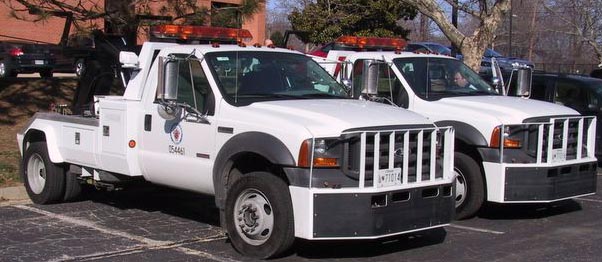ATMS Control— Incident Management Team
 Montgomery County's transportation management program combines the capabilities of the ATMS with police, fire and rescue, environmental protection and transportation agencies within the area. Montgomery County has formed a Transportation Incident Management team composed of representatives of the police, fire & rescue, environmental protection, and transportation. The team meets on a regular basis to discuss and implement improvements to the County's incident management program. Montgomery County recognizes that most delays are caused by nonrecurring congestion and emphasizes the significance of timely and proper response to incidents that greatly impact the transportation system. Incident management is critical because over 60% of delay on urban roadways is caused by accidents, disabled vehicles, construction, etc. Quick identification and response is essential. As studies have indicated, every one minute a roadway is blocked causes five minutes of delay.
Montgomery County's transportation management program combines the capabilities of the ATMS with police, fire and rescue, environmental protection and transportation agencies within the area. Montgomery County has formed a Transportation Incident Management team composed of representatives of the police, fire & rescue, environmental protection, and transportation. The team meets on a regular basis to discuss and implement improvements to the County's incident management program. Montgomery County recognizes that most delays are caused by nonrecurring congestion and emphasizes the significance of timely and proper response to incidents that greatly impact the transportation system. Incident management is critical because over 60% of delay on urban roadways is caused by accidents, disabled vehicles, construction, etc. Quick identification and response is essential. As studies have indicated, every one minute a roadway is blocked causes five minutes of delay.
Montgomery County's Transportation Management Center (TMC) maintains a close  working relationship with the Maryland Statewide Operations Center (SOC), state and county police, fire departments, Virginia Department of Transportation, and the SIM (Statewide / Seaboard Incident Management) Committee in Virginia. TMC cooperates with MSHA's Coordinated Highways Action Response Team (CHART) freeway incident management program. The TMC exchanges daily traffic incident advisories and updates with the SOC and frequently works with CHART on incident and emergency management.
working relationship with the Maryland Statewide Operations Center (SOC), state and county police, fire departments, Virginia Department of Transportation, and the SIM (Statewide / Seaboard Incident Management) Committee in Virginia. TMC cooperates with MSHA's Coordinated Highways Action Response Team (CHART) freeway incident management program. The TMC exchanges daily traffic incident advisories and updates with the SOC and frequently works with CHART on incident and emergency management.
The TMC is part of the I-95 Corridor Coalition Information Exchange Network. The primary mission of the Coalition is to coordinate information on real-time surface transportation system conditions for the benefit of travel customers in the region - both passengers and shippers. By coordinating the deployment and application of Intelligent Transportation System (ITS) concepts and technologies in the "Northeast" transportation corridor from Virginia to Maine, the goal is to make traveling across jurisdictional boundaries virtually "seamless" to the traveler.
BENEFITS:
- Develops a team concept to reduce jurisdictional "turf wars" to help realize the common goal of providing a safe and efficient transportation system
- Provides a forum to critique the team?s performance in incident management
- Allows discussion of operational issues in a controlled environment (away from the stress of an incident scene)
- Encourages the sharing of resources
